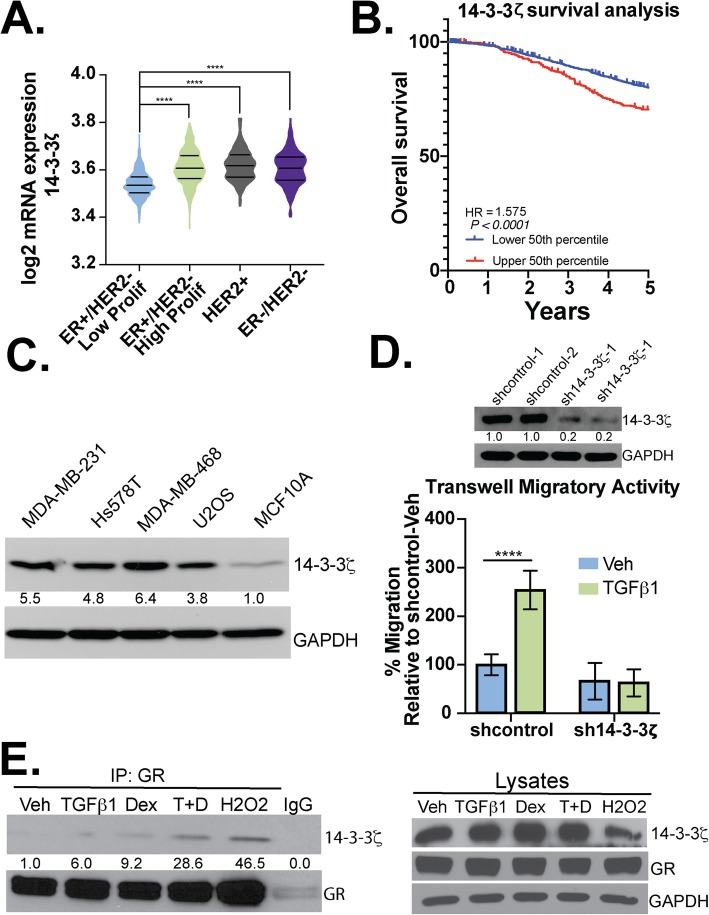Fig. 4.
14-3-3ζ is required for TGFβ1-induced TNBC cell migration. a Expression of 14-3-3ζ in breast cancer patients was analyzed using the METABRIC database (n = 1700). Significance was assessed by one-way ANOVA and Tukey post hoc for comparison between groups (****, p < 0.0001). b Survival analysis for patients from the METABRIC cohort and with mRNA microarray profiling for 14-3-3ζ were stratified into two groups: expression higher than median mRNA expression of 14-3-3ζ (upper 50th percentile) or lower than median (bottom 50th percentile). The results were analyzed for significance with a logrank p value of p < 0.0001 (n = 1981). c Western blot analysis for 14-3-3ζ of different cell lines indicated. Densitometry values for the 14-3-3ζ levels are indicated relative to non-tumorigenic MCF10A cells. d Western blot analysis of 14-3-3ζ protein levels in MDA-MB-231 cells expressing either shcontrol or sh-14-3-3ζ; two pools of each respective shcontrol are shown. Densitometry values for the 14-3-3ζ levels are shown relative to shcontrol #1. Transwell migration assays were used to test the migratory activity of shcontrol and sh14-3-3ζ MDA-MB-231 cells. TGFβ1 (10 ng/mL) was used as the chemoattractant and cells were allowed to migrate for 18 h. The mean of three independent biological replicate experiments is shown ± SD. Statistical significance was assessed by two-way ANOVA and Tukey post hoc corrections (****, p < 0.0001). e Western blot analysis was performed on immunocomplexes and whole-cell lysates to evaluate the interaction of 14-3-3ζ with GR in response to Veh, TGFβ1 (10 ng/mL), Dex (1 μM), TGFβ1+Dex, and H2O2 (100 μM; positive control for GR phosphorylation). Densitometry values for the 14-3-3ζ levels in the GR IP groups are shown relative to vehicle control. IgG was used as a negative control

